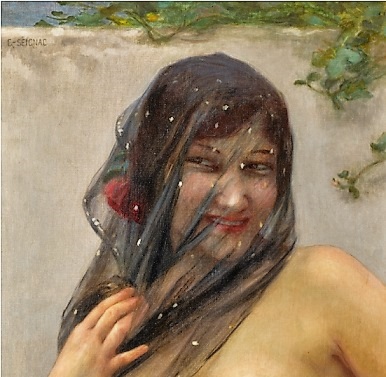Edwin Lord Weeks (1849 – 1903) was an American artist. Weeks was born in Boston, Massachusetts in 1849. His parents were affluent spice and tea merchants from Newton, a suburb of Boston, and as such they were able to finance their son's youthful interest in painting and travelling. As a young man Weeks visited the Florida Keys to draw, and also travelled to Surinam in South America. His earliest known paintings date from 1867 when he was eighteen years old, although it is not until his Landscape with Blue Heron, dated 1871 and painted in the Everglades, that Weeks started to exhibit a dexterity of technique and eye for composition—presumably having taken professional tuition.
In 1872 Weeks relocated to Paris, becoming a pupil of Léon Bonnat and Jean-Léon Gérôme. After his studies in Paris, Weeks emerged as one of America's major painters of Orientalist subjects. Throughout his adult life he was an inveterate traveler and journeyed to South America (1869), Egypt and Persia (1870), Morocco (frequently between 1872 and 1878), and India (1882–83).
Weeks died in Paris in November 1903.[2] He was a member of the Légion d'honneur, France, an officer of the Order of St. Michael, Germany, and a member of the Munich Secession. More on Edwin Lord Weeks
Please visit my other blogs: Art
Collector, Mythology, Marine
Art, Portrait of a Lady, The
Orientalist, Art of the Nude and The
Canals of Venice, Middle
East Artists, 365
Saints and 365 Days, also visit my Boards on Pinterest
Images are copyright of their respective owners, assignees or others.
Some Images may be subject to copyright
I don't own any of these images - credit is always given when due unless
it is unknown to me. if I post your images without your permission, please tell
me.
I do not sell art, art prints, framed posters or reproductions. Ads are
shown only to compensate the hosting expenses.
If you enjoyed this post, please share with friends and family.
Thank you for visiting my blog and also for liking its posts and pages.
Please note that the content of this post primarily consists of articles
available from Wikipedia or other free sources online.





